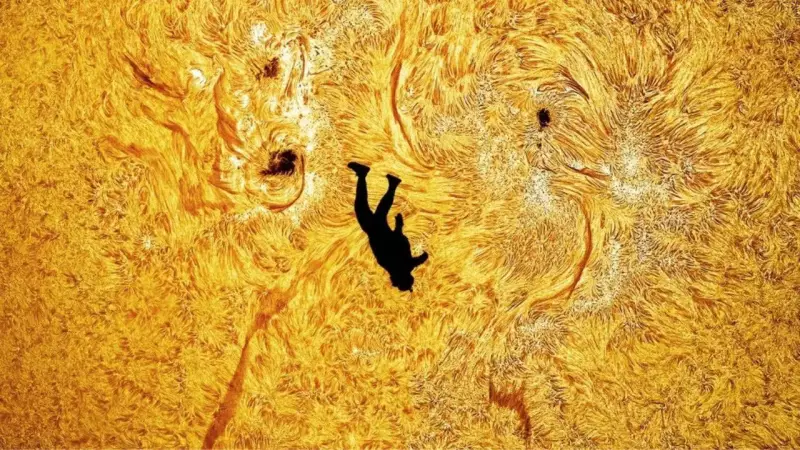
On a crystal-clear Arizona morning, an astonishing visual phenomenon unfolded that seemed to defy both physics and reason. For a fleeting moment, a human figure appeared to be falling directly across the blazing surface of the sun, creating an image so surreal it could have been lifted from ancient mythology.
The Perfect Alignment: Science Meets Art
This extraordinary capture wasn't the result of cosmic disaster or reckless stunt, but rather the culmination of meticulous planning, precise timing, and expert visual deception. Andrew McCarthy, renowned for his razor-sharp solar and lunar imagery, spent weeks preparing for this exact moment. The acclaimed astrophotographer described the planning process as "absolutely preposterous" given the numerous variables involved.
Capturing the sun alone presents significant challenges, but synchronizing a moving aircraft and a falling human in front of our star required unprecedented coordination. The flight path, solar angle, camera positioning, and skydiver's descent all had to converge within a window of mere seconds. Every calculation needed to be perfect for this once-in-a-lifetime shot.
The Choreography Behind the Capture
The illusion derives its power from clever perspective and scale manipulation. The skydiver, identified as Gabriel C. Brown - a YouTuber and musician - had leaped from a small propeller aircraft at approximately 3,500 feet altitude. McCarthy positioned himself roughly 8,000 feet away from the jump site, creating the perfect alignment that made Brown appear impossibly close to the solar surface.
The execution required six flight passes just to position the aircraft correctly before Brown made the actual jump. With only one opportunity to capture the skydiver in frame before his parachute needed repacking, McCarthy watched anxiously as the tiny silhouette crossed into view on his monitors. The resulting image shows Brown as a dark figure suspended against the sun's turbulent amber surface, positioned with surgical accuracy despite being 93 million miles away.
Echoes of Ancient Mythology
The visual resemblance to the Greek myth of Icarus is unmistakable and powerful. In the ancient tale, Icarus flies too close to the sun on waxen wings that melt, sending him tumbling to his doom. McCarthy's photograph powerfully echoes this narrative in modern form: a lone human shape falling before the solar inferno, captured with scientific tools rather than artistic brushstrokes.
This remarkable image merges ancient storytelling with contemporary technology, blending myth with astronomy, and gravity with imagination. The sun's fiery surface, captured using specialized solar filters and high-speed imaging, displays textures that appear almost touchable, while the skydiver's silhouette provides dramatic scale and human connection.
Behind-the-scenes footage shared on social media shows both men erupting into relieved, disbelieving celebration the moment they realized they had successfully pulled off this incredible feat. The image now stands among McCarthy's top five personal favorites, representing a unique combination of science, choreography, and artistic instinct.
While the skydiver was never in actual danger and the sun remained at its proper cosmic distance, the photograph resonates because it taps into fundamental human curiosity - our enduring urge to imagine ourselves in cosmic terms, placing fragile human figures against the vast, magnificent machinery of the universe.





